
views
X
Research source
Using Official Documentation

Get a valid title from the current owner when you purchase the vehicle. If you buy a vehicle that was previously owned by someone else, they should have a title to the vehicle in their name. On the back of the title is a transfer area that they can use to transfer the title to you. Once the previous owner has transferred the title to you, take it to the local office for your state's department of motor vehicles to apply for a new title in your name. The new title will be your proof of ownership.
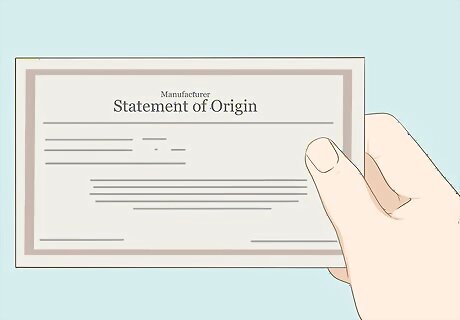
Ask for a Manufacturer's Certificate of Origin. If you buy a brand-new car from a dealer, it likely won't have a title. Instead, you'll use the Manufacturer's Certificate of Origin to identify the car. That along with a bill of sale from the dealer will establish you as the legal owner of the car. With some dealers, you'll fill out the title for an application and they'll submit it to the state department of motor vehicles on your behalf. They may charge a small fee for this service, typically under $100.

Draft a written bill of sale for private purchases. While you may not be able to prove ownership of a car solely from a bill of sale, you'll typically need it as proof of a transfer of ownership between private individuals. At a minimum, the bill of sale should include the following information: The year, make, and model of the vehicle The vehicle identification number (VIN) The date of the transaction The purchase price of the vehicle The full names and signatures of you and the seller

Contact your state department of motor vehicles. Even if neither you nor the previous owner of the vehicle has a title for the car, your state's department of motor vehicles may have a record of the ownership. If the previous owner applied for a title in that state, there should be a record of that. Typically, you'll need the full legal name of the previous owner. You may also need information about the car, including the year, make, model, and VIN.Tip: If the previous owner lived in a different state, you may have to call that state's department of motor vehicles to get the information or documentation you need.
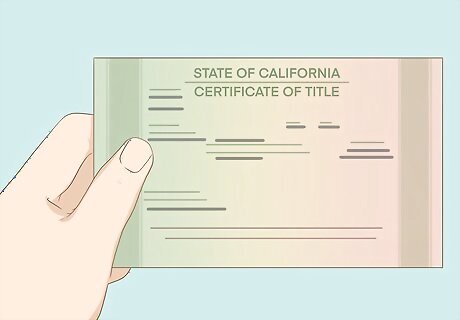
Use the previous owner's registration for older vehicles. Some states don't require a title to prove ownership for older vehicles. Get a copy of the previous owner's registration so you can register the vehicle in your name as its owner. You will also need a written bill of sale or other document that proves the previous owner gave or sold the vehicle to you. For example, in Connecticut you don't need a title for a vehicle that is over 20 years old. Other states may have different age requirements.
Applying for a Bonded Title
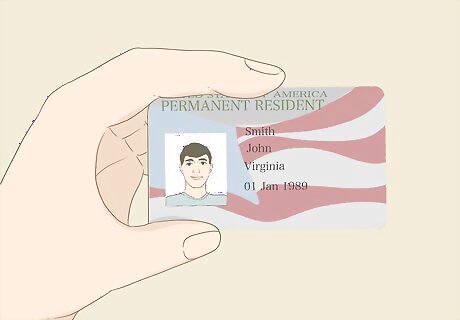
Confirm you're eligible for a bonded title. Generally, you must be a resident of the state from which you apply for a bonded title. States may also have separate requirements regarding the age of the vehicle or its condition. You cannot get a bonded title if the vehicle is not in your possession or if the vehicle was considered abandoned or junked by the previous owner.

Contact the appropriate office of your state's department of motor vehicles. Bonded title services may not be available in every branch office of your state's department of motor vehicles. If you call the nearest office or check the department's website, you can find out where you need to go to get a bonded title. In some states, the tag and title office is separate from the department of motor vehicles. If you're not sure, someone at the department of motor vehicles will be able to tell you what office you need.
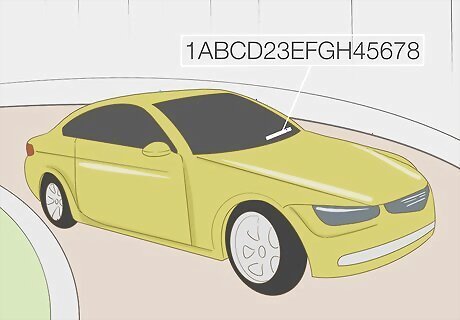
Get a vehicle identification number (VIN) inspection. A local law enforcement office conducts the VIN inspection primarily to ensure that the vehicle hasn't been reported stolen, abandoned, or junked. You can contact your local police or sheriff's office to find out where you need to go to complete this inspection. In some states, you can get the inspection done at your nearest department of motor vehicles office or a private company authorized by the department to complete these inspections. If the vehicle came from a different state, you may need a VIN inspection from that state as well.

Complete your affidavit for the bonded title. Your state will have a form that you can fill out with the required information about yourself and the vehicle. The affidavit is, essentially, a sworn statement that you are the legal owner of the vehicle. Do not sign your affidavit when you finish filling it out. It must be signed in the presence of a notary. The notary will verify your identity but won't review the substance of your affidavit.

Wait for an assessment of the amount your bond should be. The amount of your bond is at least the retail value of the car. Most states require it to be 1.5 times the retail value of the car, while some require it to be at least 2 times the retail value. Many states send you an amount that your bond should be based on the assessed retail value of your vehicle and the state requirements for the bond. In other states, you're responsible for identifying the vehicle's average retail value. Your bond may need to be for as much as twice that amount. Typically, you can find this information on the website for the department of motor vehicles or the state taxation department. Some states may use the Kelley Blue Book or National Auto Dealers Association (NADA) book value for the vehicle.Tip: Most states have a minimum amount that the bond can be, regardless of the age or condition of the car — typically, around $5,000.

Purchase your bond for the title. A bond is essentially a form of insurance that backs up your statement that you are the legal owner of the vehicle. It provides insurance for prior owners and any future owners that you are the rightful legal owner of the vehicle. Like any insurance policy or other bond, you only pay a percentage of the total bond amount, typically between 0.5% and 2% of the bond's total value. The percentage of the total bond amount you'll have to pay is usually based on your credit score. If you have a good credit score, you'll pay a lower rate. Most people won't pay more than $100 for a title bond. You're required to maintain the bond at least while you own the vehicle, and often for 2 or 3 years after you sell it.
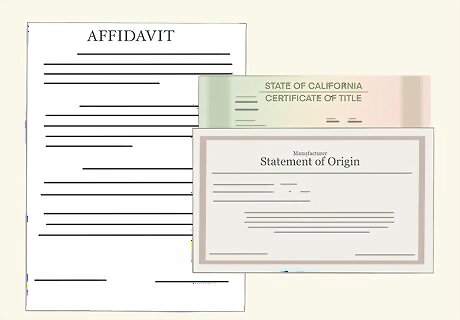
Gather documents to show that you bought the vehicle. Documents such as a bill of sale may not be adequate to prove ownership of a car by themselves, but they do prove that you bought the vehicle from someone else. These will strengthen your application for a bonded title. You can also get the person who sold you the car to sign an affidavit stating that they sold you the car. The affidavit should include the year, make, and model of the car, its VIN, and the date they transferred the car to you. Make sure they sign their affidavit in the presence of a notary.

Submit your affidavit and documents to the appropriate office. When you've completed everything necessary, submit it to the department of motor vehicles or other state government department that issues bonded titles. If possible, take your affidavit and original documents to the office in person. If you have to mail your documents, send them using a method that allows you to track them, so you know when they're received. If you're sending original documents, use registered or certified mail. The department will evaluate the information you provided and issue a title. You'll typically get your title in the mail within a month or less.




















Comments
0 comment